One of many things older adults can look forward to in their retirement years, is continuing to attend learning opportunities. Learning Unlimited (Oxford) is one such endeavour. Founded by the late Eva Latham on September 29, 1982, Learning Unlimited (Oxford) owes its existence to Eva Latham who was “a brilliant and inspirational leader, through whose vision and will, the organization came into being. She was the founder and the driving force which made it possible for seniors of Woodstock and area to come together with a common cause. She and they believed that ‘using the mind preserves it’ and that older people need educational stimulation if they are to stay alive in the community. That belief is still very much alive today. The total program has been designed to stimulate interest in a wide variety of topics, increase knowledge, and develop seniors’ sense of self-worth, confidence and dignity.” (Learning Unlimited (Oxford) brochure.)
Learning Unlimited (Oxford) is an eight week program for older adults that runs every Wednesdays from October to November. The second program runs from March to April. There are two sessions consisting of two interesting and engaging speakers. Coffee is served at 10:00 a.m. followed by the first presenter from 10:30 a.m. to 11:45 a.m. Lunch is available for $8.00 at noon with the second session running from 1:15 p.m. to 2:30 p.m.
On April 8, 2015, author John McKenty was the presenter in the morning session and motivational speaker Marva Wisdom spoke in the afternoon. Newly appointed President of Learning Unlimited (Oxford), Paul Ward, opened the program telling a few jokes. Shirley Rowe, Program Committee, introduced the guest speaker, John McKenty, who worked at the same CCM plant with her husband. John McKenty spoke to the large audience about the Canada Cycle & Motor: The CCM Story.
John McKenty explained how as a retired school principal he got involved in writing his book about the history of CCM, Canadian Cycle and Motor Company. Growing up in Perth and his love for history, John McKenty researched and wrote a book about local brothers owning a hardware store who had a lot of CCM advertisements. John focused his research on CCM. His book Canada Cycle & Motor: The CCM Story is mainly about the company's history.

But to understand the history of CCM, one must first understand the history of the bicycle. However, no one knows for sure where the bicycle came from or who invented it. In order to get around in his large gardens, Baron Karl von Drais de Sauerbrun of Germany got his local blacksmith to build a bicycle he designed. The draisienne or Hobby- horse was born. Made entirely from wood, one would walk or run to move the bicycle.

Mr. Dunlop developed the rubber tire in 1888 with air that he made for his son’s tricycle. That same year the first coaster brake was developed and the chain and sprocket were attached to the back wheel. The bicycle was no longer made entirely of wood, it now had two wheels of the same size and brakes were used making it a safe bicycle. Everyone wanted one. Soon women not just men were riding bicycles. But bicycles were not used by youngsters. They were made for adults, priced for adults and targeted for adults for they had the money to purchase them. However, with the advance of the horseless carriages, the motor vehicle, everything changed. Everyone wanted these new powerful machines. Therefore, youngsters were targeted to purchase bicycles. According to John McKenty, CCM did an excellent job in this. CCM flooded the schools from east to west with their scribblers or exercise books with their slogan “School Days are Bicycle Days.” CCM products like bicycles, ice tacks, skates were advertised throughout the scribblers. CCM ingeniously entered the youth market in a big way.

In France, a blacksmith named Pierre Michaux, developed the first pedal equipped bicycle known as the velocipede or fast-foot. No longer did the rider have to walk, pedals were used to turn the two wheels on the bicycle. This bicycle became very popular but it was very uncomfortable and dangerous. The only way to stop was to wait for it to slow down or run it up a tree.
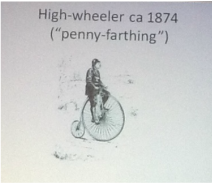
In England the front wheel was made bigger. There were many High-wheeler Bicycle Clubs (Woodstock is no exception) that were formed where members wore uniforms resembling military. In a group, Club members looked like a battalion. The front racer even had a whistle or bugle. Bicycle races became quite a popular sport in its day. However, problems with the High-wheeler consisted of sudden stops. The phrase “taking a header” came from here.
Daniel Massey established Massey Agricultural Works in Newcastle, Ontario in 1847. After Daniel Massey died, his only son Hart Massey took over the family business and in 1891 merged with their competitor Harrison to form Massey-Harris. A plant was located in Brantford, Ontario with the head office in Toronto. Massey-Harris was the largest manufacturer in the British Empire.
In 1896 Hart Massey died, his fourth son Walter Massey took over as President. He had a great interest in bicycles and felt Canada had everything except the patent to build bicycles here. A deal was strict with Coronal Pope who was paid $10.00 for every bicycle sold to use his patent. The Massey Works Bicycle built the Silver Ribbon. These bicycles were only built for a short time. As a result, today a Silver Ribbon Bicycle, according to John McKenty, is a valuable piece of manufacturing history.

However, Massey Bicycle Works had stiff competition from Spalding Bicycles who opened a very large operation in Hamilton, Ontario. Walter Massey wanted investors and looked at his Methodist church congregation to Senator George A. Cox and Sir Joseph Flavelle. Both men were millionaires. With their financial backing, Walter Massey bought out four bicycle competitors and merged them with Massey Bicycle Works to create CCM, Canada Cycle & Motor Company. In September 1899 CCM was launched and shares were bought. What could go wrong with investors like Senator Cox and Sir Flavelle involved?
Nevertheless, money was lost on this venture for many reasons according John McKenty. One reason was the advance of the motorcar. However, another reason was CCM’s public relations problem. In rural Canada people wondered why billionaires like Senator Cox and Sir Flavelle were interested in bicycles, men who were chauffeured around. They figured it was for the money. They were right. In 1903 Thomas A. Russell, who grew up on a farm in Exeter, Ontario, helped to turn CCM’s public relations around. He closed all four plants and kept the one at Toronto Junction.

CCM made a Canadian car for Canadians but it was only produced for ten years. In 1950 with the war effort, CCM helped build military supplies. After the war, CCM could not build a vehicle in Toronto for what Henry Ford could in Detroit, Michigan. Canadians were patriot but would not pay almost $2,000.00 for a motor vehicle when they could purchase one for $500.00.
CCM became synonymous with ice tacks or skates. The steel used in the bumpers from the Russell Automobiles were used to make the CCM’s Automobile Skates. Until 1920 CCM made the blade and boot together. CCM skates were favoured among famous hockey players, except for Gordie Howe who wore Bauer skates, and they produced panels every year of the winning hockey team for the season. In order to draw in the younger crowds to their tacks, CCM turned to Bobby Hull, the most celebrated hockey player in the country, and launched the Bobby Hull line where his picture and signature were used on bicycles and hockey equipment.
George Parsons signed with the Toronto Maple Leafs in October 1935. However, his hockey career was over before it was stated. In March 1939, he got a hockey stick to his left eye which cut his retina. He lost the sight in that eye and it was eventually removed ending his hockey career. At age 25 George Parsons was forced to retire. He was hired at CCM and throughout his 40 years there, he raised through the ranks. Parsons's most notable achievement was the CCM full-mask helmet. For years he lobbied to make it mandatory for hockey players to wear hockey helmets. This was achieved in August 1978, when players in the National Hockey League had to wear protective helmets.
In 1917, CCM built a new plant in Weston, Ontario. Again, CCM would struggle had some up and down cycles. Whereas CCM’s price went up their quality went down at the same time when their competitors’ price went down and their quality went up like Rollies. CCM was bought out by Pro-Cycle in 1983 and the Weston plant was closed.
Bicycle racing was a popular sport 100 hundred years ago. Canadian brothers Willie and Arthur Spencer were bicycle champions. Willie Spencer won his first six day race in San Francisco in 1917 and his younger brother Arthur won the American Sprint Championship. Willie Spencer was one of a few six-day bicycle racer champions for CCM where he rode the CCM Flyer. He would win almost all bicycle races both in North America and overseas. Willie Spencer also was a promoter for bicycle racing at Maple Leaf Gardens.
Despite that both hockey and baseball were popular professional sports throughout North America, bicycle racers made big money both from their winnings and from their sponsors. John McKenty reported that bicycle racers were making more money than Babe Ruth between 1914 to the 1930s. One of the highest payed professional athlete at that time was the six-day bicycle racer William “Torchy” Peden. Peden received a gold-plated bicycle, the CCM Flyer, for his many winnings.
| Gord Chard Long-time CCM employee Gord Chard took two weeks to shut down the CCM operation. He turned out the lights and locked the doors at CCM for the last time. The Weston plant was demolished soon afterwards. CCM played a huge part in Gord's life; he met his wife Alice there, they spent a lot of their social life at the manufacturing company and Gord played on the CCM industrial hockey team. John McKenty stated that CCM was a fascinating part of Canadian history, culture, sports and manufacturing. |
John McKenty gave a synopsis of his presentation. CMM crossed so many pieces of Canadian history. They made tacks; had a close relationship with professional athletes. They provided scribblers to all schools throughout Canada during the depression and they had champion bicycle racers. In June 2013 Canada Post released two permanent stamps dedicating Canadian motorcycle manufacture, one stamp was the CCM 1908 Lightweight Motor Cycle.
 Marva Wisdom speaks to the large audience at Learning Unlimited (Oxford)
Marva Wisdom speaks to the large audience at Learning Unlimited (Oxford) Marva Wisdom - The Second Dynamic Presenter
Following lunch, Learning Unlimited (Oxford) member Inez Fishwick introduced the afternoon speaker, Marva Wisdom who was described as a great leader who speaks about her personal and professional life. Marva Wisdom is a consultant of her organization called Wisdom Consulting. She is a dedicated volunteer, mentor and advisor who has received numerous awards. She is the President of the Guelph Black History Society; the Founding Chair of the Institute for Canadian Citizenship (Guelph Chapter) and was the Director for both the YMCA/YWCA of Guelph and the Rotary Club of Guelph. Marva Wisdom coined the acronym L.E.a.D. which stands for Leadership, Engagement, and Diversity, qualities she uses to bring both the community and the country together. Marva Wisdom’s topic was "Building Community and the Modern Day Underground Railroad".
Marva Wisdom described how her parents emigrated from Jamaica to settle in Tavistock, Ontario. She explained that there were a lot of immigrants who settled in Canada as it was perceived to be “the land of milk and honey.” Her father settled on a farm for the family lived in the country in Jamaica. Marva Wisdom explained that she never fitted in living in Tavistock and going to school. However, when the family moved to Stratford, Ontario, where her parents still reside, she fitted in better there. People were much warmer and more welcoming. Marva reported how she was called the “N” word walking down the hall at school. The next day there were eight guys who lined the hallway and chanted her name. This happened everyday when she walked by. Marva Wisdom stated she would like to thank those young men who lifted her spirits. She reported that every person has a story to tell. People "need to own their history, to own their stories. We are all similar in more ways than we know. In our differences is where we find our learning. We need to find safe places to share our stories."
Moving from her personal life to her professional life, Marva Wisdom explained how the BME (British Methodist Episcopal) Church in Guelph was up for sale in 2011. Despite residing in Guelph with her family for 25 years, Marva only visited the church on two occasions. Guelph did not have an organized black population. A lot of research on the area showed that during the 1800s and 1920s, 20% of Guelph's population were black.
The Church was built in 1880 by former fugitive slaves who arrived in the area via the Underground Railroad. Marva Wisdom confessed that she was not aware of the black history in the area aside from the Queen's Bush Settlement in Wellington County. Since this was such a significant historic site, Marva Wisdom could not see the property sold with the possibility of the church being demolished. She reported that there were a about 50 to 60 offers in purchasing the church. As a result, along with the Guelph Black Heritage Society, where she is the President, Marva Wisdom also got the Methodist Church involved. She realized that the church could be used in many possibilities within the community.
Marva Wisdom explained how there are 36 properties on parsonage from Niagara Falls to St. Catherine's, Brantford and Woodstock. Furthermore, across southwestern Ontario, one in ten of these properties are left to be maintained by churches like the Nathaniel Dett Chapel in Niagara Falls. However, despite good intentions of wanting to purchase the church, there were a lot going against them like a lean on the property and litigation.
Nevertheless, the Guelph Heritage Society was successful in purchasing the property for $100,00.00 a lot more money then they had indented to spend but there were a lot of legal fees.
The Guelph Heritage Society
The final sale of the BME Church in Guelph was secured on November 12, 2012. The 131-year old church is rented out all week and has many programs from all different cultures occur there. One program is a circle of youths and elders who share their stories. Marva Wisdom reported that the plan for the Guelph Black Heritage Society is for the space to be available for the community to be used as a cultural, historical and social centre.
However, Marva Wisdom explained that although there are historic sites, sometimes they are not always protected. She provided an example when she visited Africville in Nova Scotia. Despite a plaque to acknowledge this once Black Canadian community that was ravaged with racist tactics forcing the residents to leave during the 1960s, its set up in a dog park. Ironically, underneath the dedication signage was a dog waste disposal unit. Marva Wisdom reported that when she brought this to someone's attention there was flack with residents in relocating the dog park. No one wanted to acknowledge the past historical significance of that land mark. Nevertheless, a comprise was eventually reached.
Marva Wisdom was a bit disappointed when she realized there was not enough time for questions. Learning Unlimited (Oxford) member, Jim Elliot thanked the afternoon speaker. A crowd gathered around Marva Wisdom following the meeting to ask their questions.
Learning Unlimited (Oxford)
All in all it was a most interesting and informative day listening to both these dynamic presenters John McKenty and Marva Wisdom. Although over now for the year, rest assured one can anticipate another year of great presenters at Learning Unlimited (Oxford). The $30.00 fee is well worth the cost. All sessions meet in the Auditorium of the former Br. 55 Royal Canadian Legion, since April 11, 2015 renamed The Private T.W. Todd Memorial Hall, located at 576 Brant Street in Woodstock. For further information you can contact Irene Lazenby at 519-462-2597.









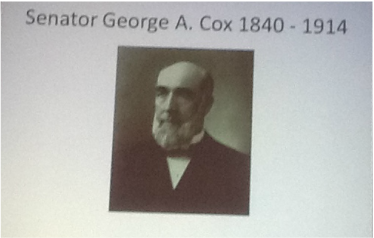




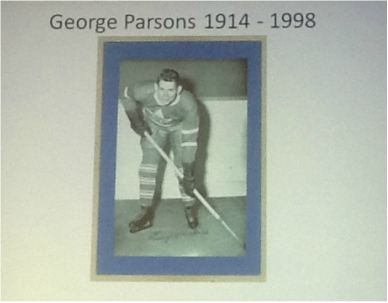

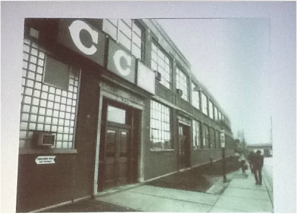















































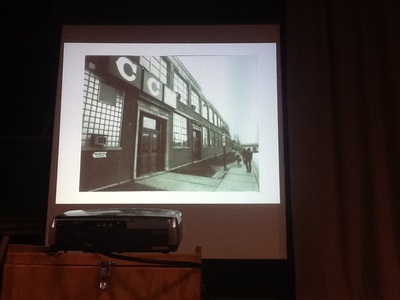











 RSS Feed
RSS Feed
